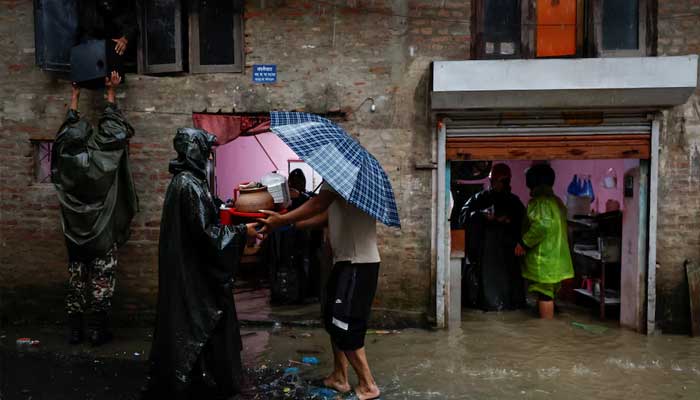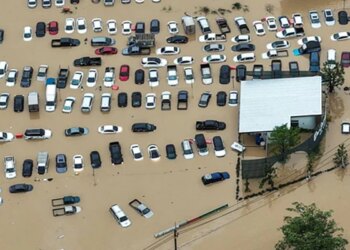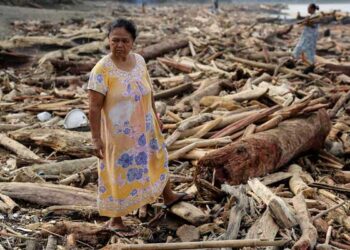Select Language:
Heavy rainfall has caused landslides and flash floods in Nepal, leading to blocked roads, destroyed bridges, and the deaths of at least 22 people over the past 36 hours, officials reported Sunday.
Police spokesperson Binod Ghimire stated that 18 individuals lost their lives in separate landslides in Ilam district, located in eastern Nepal bordering India. Additionally, three people were killed by lightning strikes in southern Nepal, and one person died in floods in Udayapur district, also in the east.
Authorities confirmed that 11 people have been swept away by floodwaters and remain missing since Saturday. Rescue workers are actively searching for them, according to Shanti Mahat, a spokesperson for the National Disaster Risk Reduction and Management Authority (NDRRMA).
Numerous highways have been rendered impassable due to landslides and flooding, trapping hundreds of travelers. Domestic flights have been significantly disrupted, though international flights continue operating normally, said Rinji Sherpa, spokesperson for Kathmandu airport.
In southeastern Nepal, the Koshi River—known to cause frequent severe floods in the neighboring Indian state of Bihar—has risen above hazardous levels, a local official reported. Dharmendra Kumar Mishra, district governor of Sunsari, explained that water levels in the river are more than twice their usual amount. All 56 sluice gates of the Koshi Barrage have been opened to drain excess water, compared to the normal 10 to 12 gates, and authorities are considering restricting heavy vehicles on the bridge.
In Kathmandu, a city surrounded by hills, several rivers have flooded streets and inundated numerous homes, effectively isolating the capital from the rest of the country by road. Landslides and flash floods are common during Nepal’s monsoon season, which usually spans from mid-June to mid-September, claiming hundreds of lives each year.
Meteorologists forecast continued heavy rains in the Himalayan nation through Monday. Officials emphasize that they are exercising maximum caution and are taking steps to assist those affected by the ongoing natural disasters.






